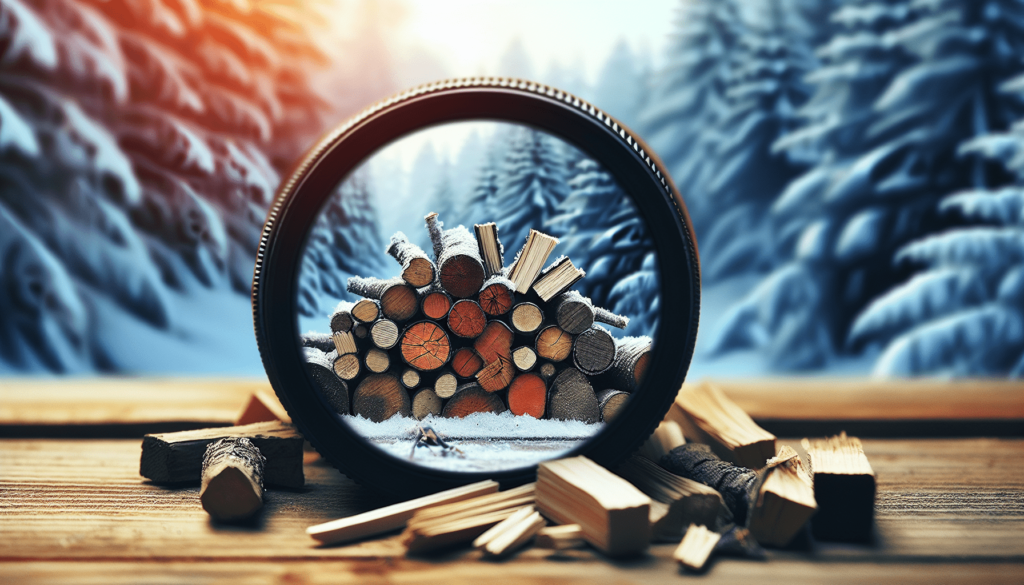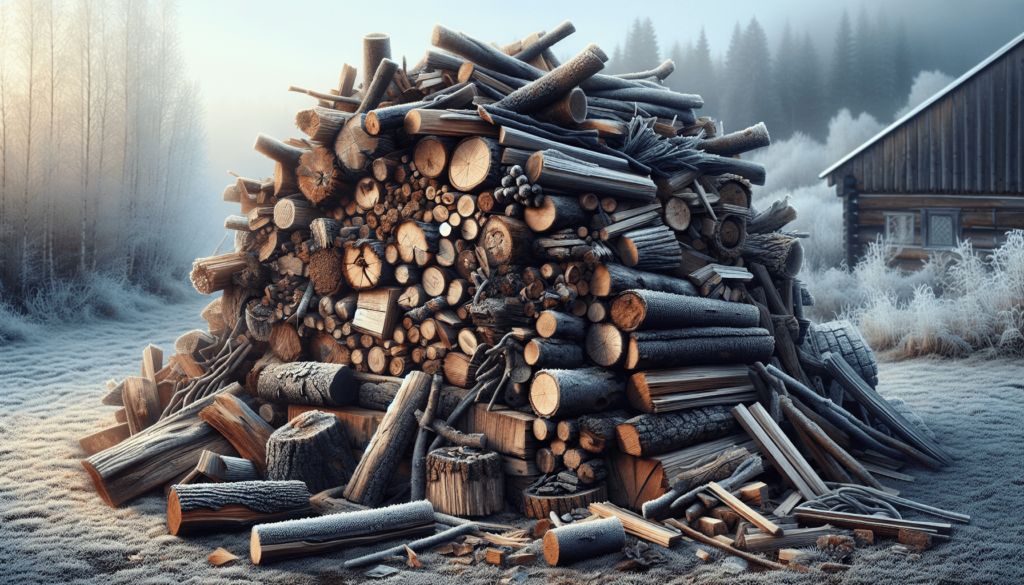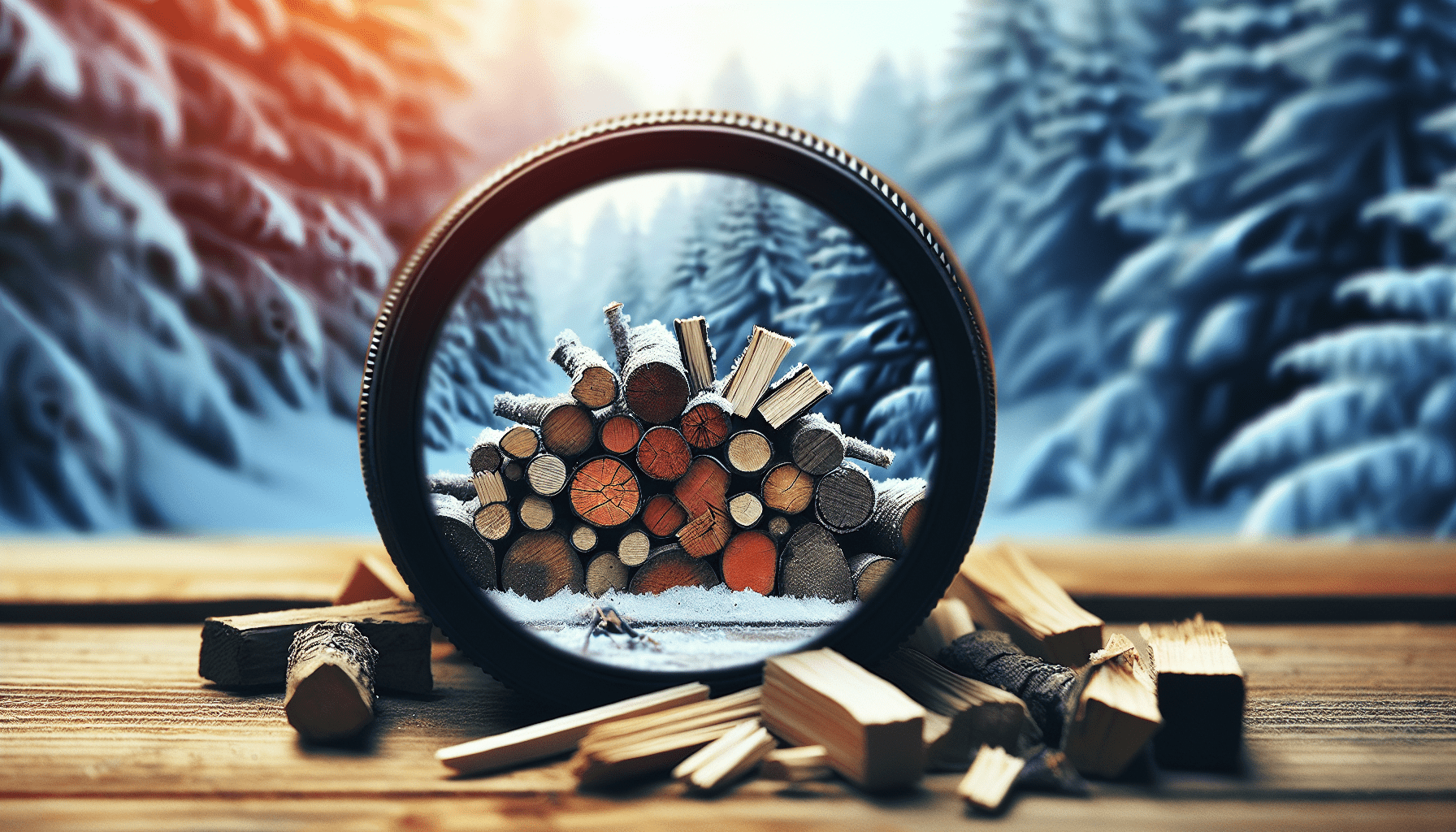Getting firewood to burn can be an elusive task, one that leaves many of us scratching our heads in frustration as we stare at uncooperative logs in the fireplace. I remember the countless times I tried and failed, wondering if it was my technique or simply bad luck. This article delves into the common reasons why your firewood might not be catching fire, from moisture content to improper stacking techniques, and offers practical solutions to finally get those flames dancing. If you’ve ever wondered “Why can’t I get my firewood to burn?” then keep reading for some tried-and-true tips that will transform your chilly nights into warm, cozy evenings. Why Can’t I Get My Firewood To Burn?
Why can’t I get my firewood to burn?
I’ve been there. You’ve got the fireplace ready, a stack of books to read, maybe a hot cocoa in hand, and all you want is a cozy fire. But, alas, the firewood just won’t catch. Let’s break down why, step by step, and ensure you get to enjoy that dreamy fire.
The Different Types of Firewood
Choosing the right firewood is like choosing the right shoes for an occasion. Some are great for a hike, others will leave you blistered and cranky. Firewood’s the same.
Hardwood vs. Softwood
I remember being baffled the first time someone asked me if I wanted hardwood or softwood for my fireplace. “Uh, I don’t know, something burny?” I muttered. But there’s a science to it. Hardwood and softwood each bring their own flare (pun intended).
| Feature | Hardwood | Softwood |
|---|---|---|
| Density | Denser | Less dense |
| Burn Time | Longer | Shorter |
| Heat Production | Higher BTUs | Lower BTUs |
| Common Trees | Oak, Maple, Cherry | Pine, Spruce, Fir |
| Ideal Use | Sustained, long burns | Quick, hot fires, kindling |
Hardwood is fantastic for those long, cozy evenings by the fire. Softwood, on the other hand, is great if you need a roaring fire fast but don’t plan on it lasting throughout a “Lord of the Rings” marathon.
Properly Seasoned Firewood
Alright, let’s move from the types of wood to seasoning. And no, we’re not talking about adding a pinch of salt and pepper. Seasoned firewood means it’s been dried out enough to burn efficiently. Fresh cut wood, or “green wood,” contains a lot of moisture, making it a potential fire hazard and a one-way ticket to frustration town.
How to Identify Seasoned Wood
I like to imagine seasoned firewood as a wise elder—a bit more cracked, gray, and weathered, but bursting with stories of warmth and light. Here are some surefire methods to determine if your wood has matured to perfection:
- Color: Aged wood is typically grayer than its freshly cut companions.
- Sound: Give it a knock; seasoned wood produces a resonant, hollow sound, unlike the dull thud of green wood.
- Cracks: Look for checks or cracks in the grain ends. These are like the wisdom wrinkles of wood.
- Weight: Seasoned wood is noticeably lighter as the water has evaporated.
Storing Firewood
In my early days, I thought tossing my firewood into a corner of the yard would miraculously yield dry timber. Spoiler alert: Mother Nature had other plans. Proper storage is key to ensuring your firewood is ready when you are.
Simple Tips for Storing Firewood
- Elevation: Always elevate your woodpile off the ground. A pallet works wonders. This allows air to circulate and moisture to escape.
- Cover: Use a tarp or a specially designed firewood cover. Remember, it’s about finding a balance—protection from rain but still allowing air flow.
- Location: Find a spot with decent air circulation but not in the direct line of the monsoon.
I’ve definitely learned my lessons the hard, wet way.

Building the Perfect Fire
Alright, you’ve got the right wood, it’s seasoned, and it’s been stored like a pro. Now what? It’s showtime! Building a fire is as much art as it is science, reminiscent of assembling the perfect sandwich. Here’s my tried-and-true process.
The Fire Triangle
Mother Nature loves a good rule of three, doesn’t she? Here’s another one for you: the Fire Triangle. This concept is essential for understanding how fire works.
| Component | Description |
|---|---|
| Heat | The spark that sets it all off. |
| Fuel | The wood, where the party happens. |
| Oxygen | The breath of life for your fire. |
Layering the Fire
After a fair few fire fails, I nailed down this method of building a fire. It’s like a wooden burger of warmth:
- Kindling: Start with a good base of kindling—small sticks or pieces of softwood. These are like the chips that get the salsa party started.
- Tinder: Add tinder (dry leaves, paper, or even some dryer lint). This is the cheese that unites all the flavors.
- Logs: Finally, place your seasoned logs on top. Align them in a crisscross or log cabin style for the best airflow.
Lighting the Fire
This part always feels slightly ceremonial. Strike a match, or use a lighter, aiming at the tinder to get things started. Once the tinder catches (hopefully not your fingers too), the kindling should ignite, setting the stage for the main logs to burn gloriously.
Common Mistakes and Troubleshooting
Everybody makes mistakes, especially when it comes to building fires. We’ve all been there, staring in disbelief at our smoldering, stubborn pile of logs. Here are some issues you might encounter and some friendly advice on how to fix them.
Wet Wood
“Why isn’t this catching?” I’d ask, just as the rain began to fall. Moisture is the enemy. Always ensure your wood is well seasoned and dry. If you suspect it’s a bit damp, try bringing it inside (or near the fire) for a few hours to dry out.
Poor Air Circulation
I’ve often complained that my fire “just doesn’t breathe.” And it literally doesn’t, without proper airflow. Avoid jamming too many logs too close together. Give them space, like socially distanced fire logs, if you will.
Using Only Large Logs
Don’t go straight for the big boys. They need kindling and tinder to get started. Think of logs as the hearty entrée—start with appetizers.
Closing Off Air Supply
It’s tempting to shut the fireplace doors entirely once the fire’s roaring to keep the heat in, but a fire needs air to thrive. Keep the flue open and allow some air in.
Additional Tools and Helpers
When I started building fires, I had no idea there were gadgets galore to make life easier. Some of these tools have become downright indispensable in my fire-building routine.
Fire Starters
These handy little devils can be a lifesaver, especially when your kindling isn’t cutting it. They come in various forms, from natural wax starters to chemically treated blocks. Just insert one or two in your kindling before lighting.
Bellows
A bellow is like an air steroid for your fire. If things aren’t igniting as they should, a few pumps of a bellow can introduce the necessary oxygen boost to get things roaring.
Moisture Meters
This gadget still makes me feel like I’m auditioning for “C.S.I.: Fireplace Edition.” But it’s super useful. Just stick the prongs into a piece of wood, and the meter tells you the moisture content. Aim for less than 20%.
Fire Poker
No, not the online card game. A good fire poker can help you rearrange and manage your logs without burning your hands off. Essential for keeping everything in place and optimizing airflow.

Environmental Considerations
Let’s not burn the world while burning our fires, shall we? There’s a bit of responsibility that comes with enjoying a cozy fire, especially when it comes to choosing and using wood sustainably.
Avoid Burning Chemically Treated Wood
I learned this the hard way, almost coughing up a lung. Chemically treated wood, like some pallets or construction lumber, can release harmful toxins when burned. Stick to natural, untreated wood for a healthier environment and cleaner air.
Responsible Wood Harvesting
If you’re gathering your own wood, ensure you’re not stripping the land dry. Follow local guidelines and consider replanting what you’ve taken whenever possible.
Efficient Burning to Reduce Smoke
A properly built and maintained fire not only enhances your enjoyment but also minimizes smoke, which is better for both your lungs and the planet. Always aim for hot, efficient burns.
Learning from the Pros: Historical Context
The art of building a fire dates back to the dawn of civilization. From ancient fire-building methods to contemporary techniques, there’s a lot we can learn from the past.
Native American Fire-Building Techniques
Native Americans were masters of fire, using it for everything from cooking to signaling. They often used “tipi” or “log cabin” structures to optimize airflow and ensure a steady burn. Emulating these techniques can drastically improve your fire-building prowess.
Pioneer Methods
Back in the day, pioneers didn’t have the luxury of modern fire starters or moisture meters. They relied on skill and careful wood selection—often employing the same hardwoods and woods from dead-standing trees, which were naturally dried.
Modern Innovations in Fire-Building
Technology has caught up with tradition, offering us some high-tech means to make fire-building almost foolproof (emphasis on “almost” because, well, life).
Log Splitters
Gone are the days when you needed Herculean strength to split logs. Electrical or gas-powered log splitters can make short work of even the toughest timber. It’s a worthy investment if you’re a frequent firewood user.
Fire Pit Inserts
Modern fire pit inserts are designed to optimize airflow and make fire-building more efficient. They’re particularly useful for outdoor settings and can make starting a fire nearly as easy as flipping a switch.
Smart Fireplaces
Yes, folks, even your fireplace can be smart these days. WiFi-enabled fireplaces allow you to control flame height, heat output, and even set schedules from your smartphone. A bit overkill for some, but for gadget lovers, it’s a dream.
Safety First
I’d be remiss not to talk about safety. Removing the romance momentarily, let’s not ignore that fire is inherently dangerous.
Fire Extinguishers and Smoke Detectors
Always have a functional fire extinguisher within reach when you’re using your fireplace or outdoor fire pit. Smoke detectors are a must, and don’t forget to check the batteries often.
Safe Distance
Keep flammable materials far away from your fireplace. This includes that enticing stack of wood. While it makes for a picturesque scene, keeping it too close can invite disaster.
Proper Ventilation
Ensure your chimney or flue is clean and open. Creosote buildup can ignite, leading to dangerous chimney fires. Regular cleaning is crucial for ongoing safety.
Community Wisdom
One thing I’ve found invaluable is the wisdom shared by friends, family, and even the odd neighbor who saw me struggling and offered a helpful tip. Don’t hesitate to ask for advice or join local forums where fire enthusiasts share their triumphs and tribulations.
Sharing Tips
Every region has its quirks. Whether you’re in the damp Northwest or the arid Southwest, local advice might just be the golden nugget you need. Swap tips, share stories, and maybe even trade a few logs.
Learning from Mistakes
I’ve had more failed fires than I’d like to admit, but each one taught me something useful. Embrace your mistakes as part of the learning curve.
The Joy of Fire
After delving into the nitty-gritty of firewood, storage, and just plain pyromania, remember why you wanted a fire in the first place: the sheer joy of it.
Enjoying the Moment
There’s something primal and soothing about a well-made fire. Sitting by the crackling flames makes all the sweat and frustration worthwhile. It’s a reward in itself, a warmth that invites reflection, conversation, or just a simple moment of quiet.
Creating Memories
The joy of building a fire is also about sharing it—with family, friends, or even just a good book. It’s about creating moments that will outlast the burn.
Conclusion
So, why can’t I get my firewood to burn? Turns out, there are myriad reasons, each more fascinating and solvable than the last. It’s all a learning process—understanding the wood, storing it right, building it properly, and troubleshooting when the flames don’t cooperate. With a little patience and a dash of knowledge, you’ll be the fire whisperer, conjuring the perfect blaze every time.
Remember, each unsuccessful try is just a step towards that perfect, uninterrupted cozy evening by the fire. So here’s to more successful fires and fewer smoke-filled rooms. Happy burning!

